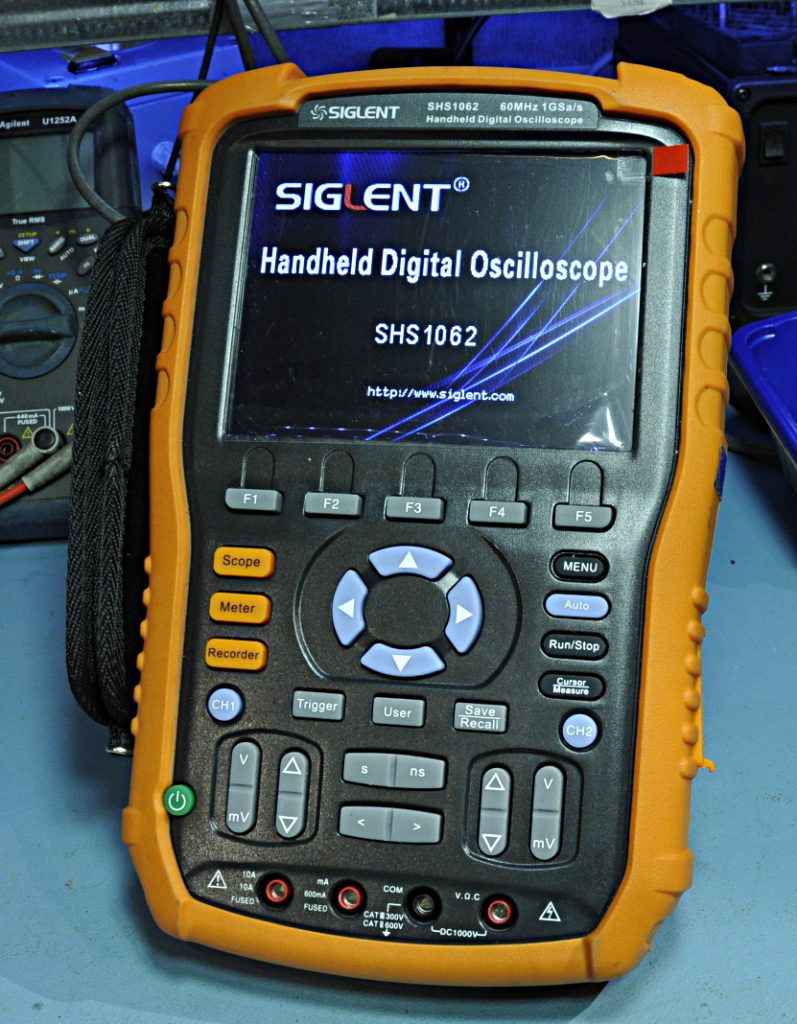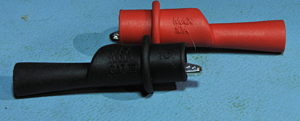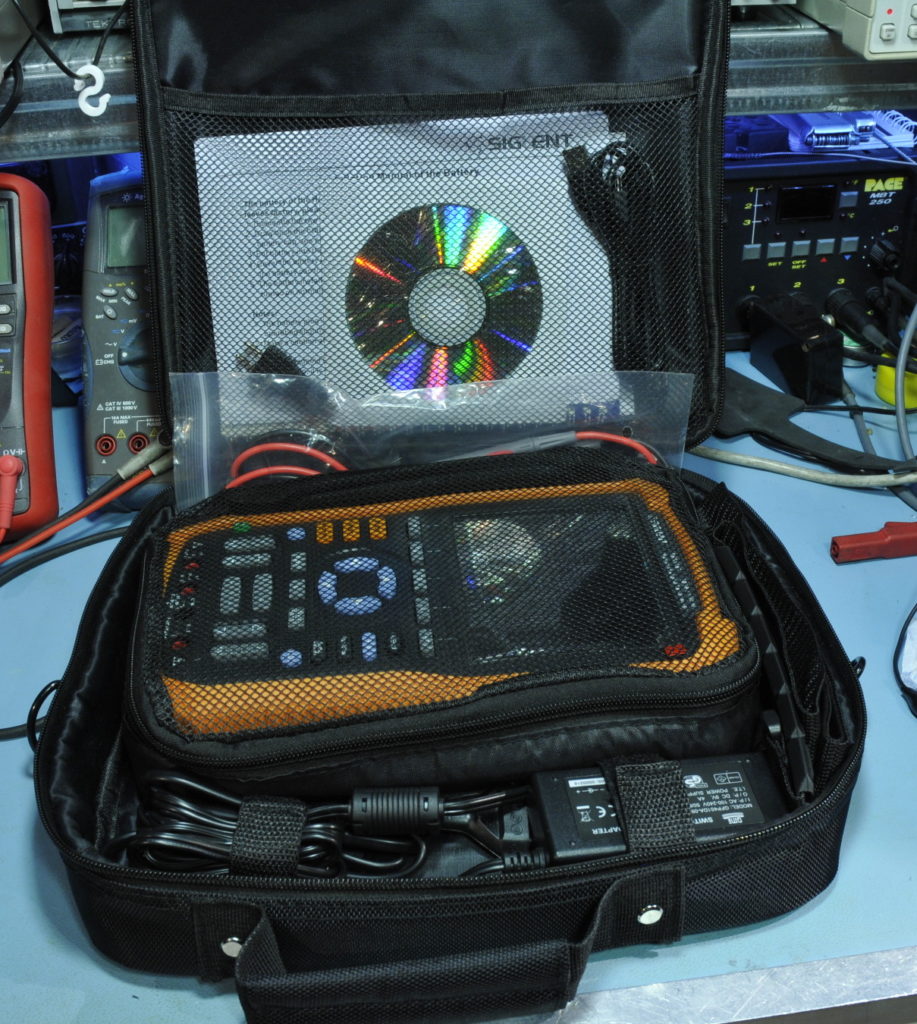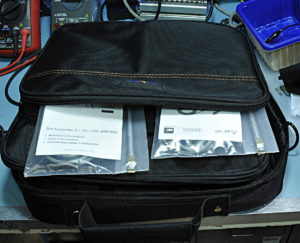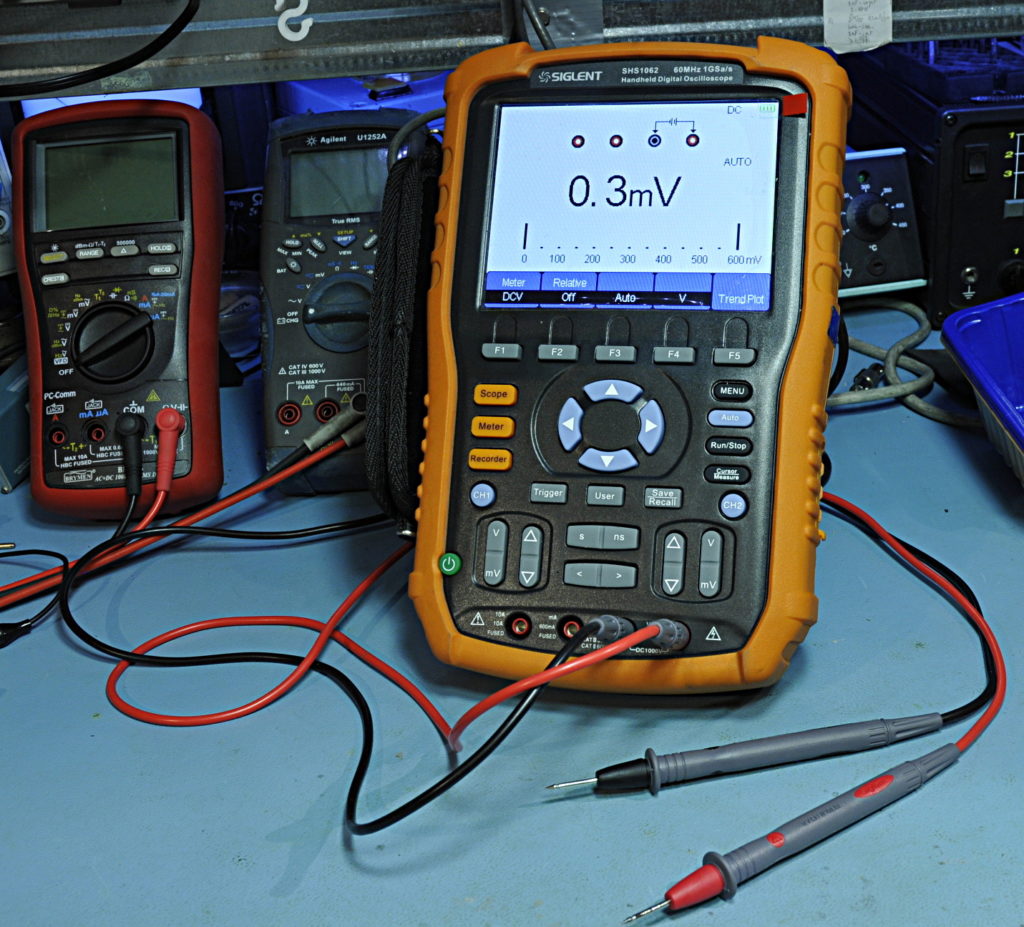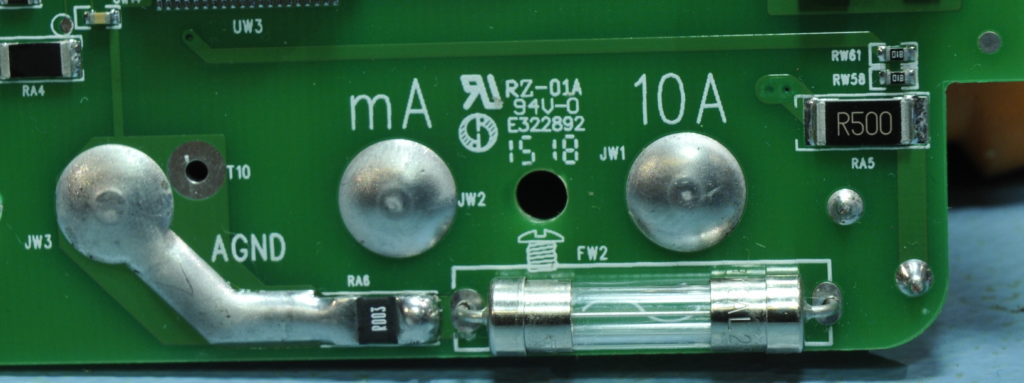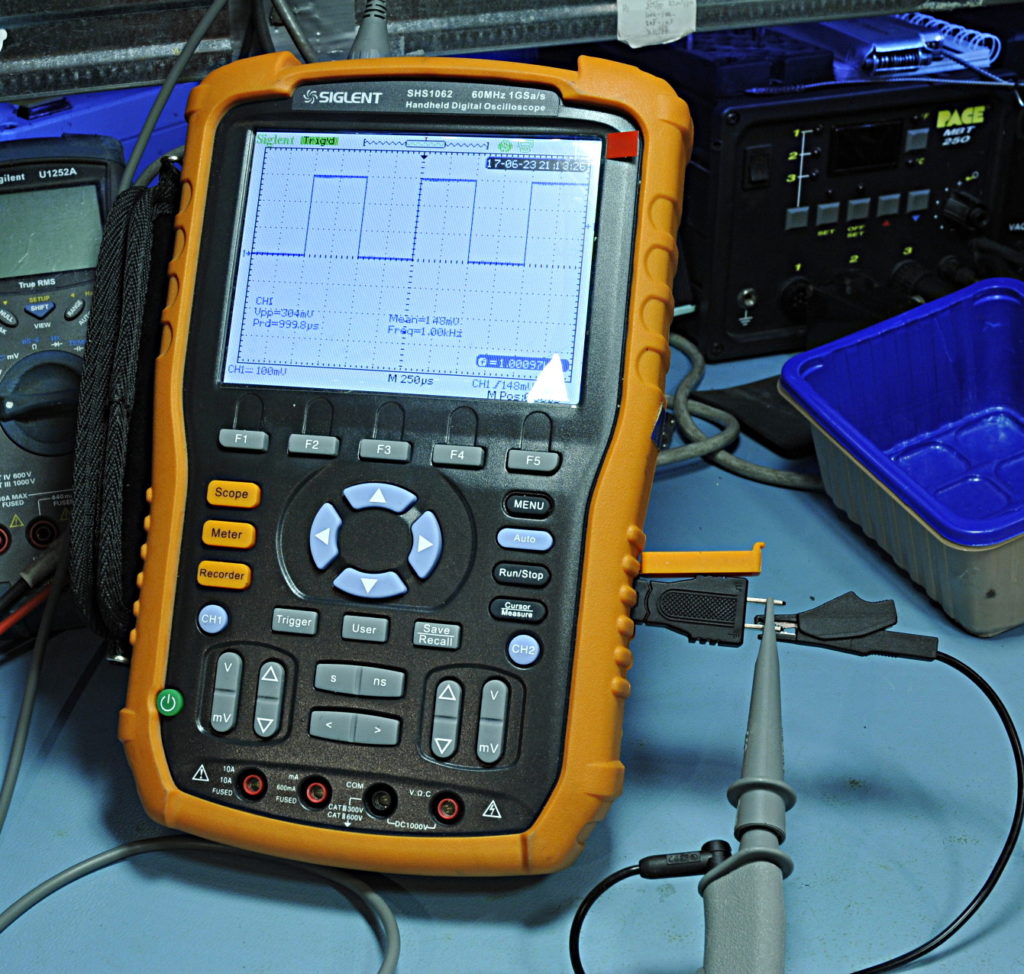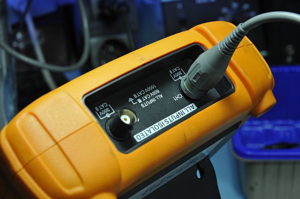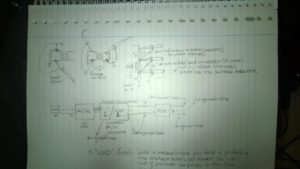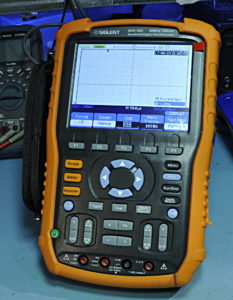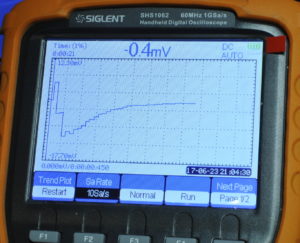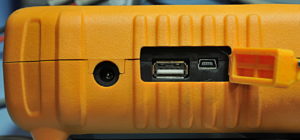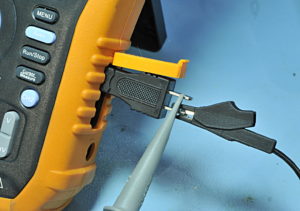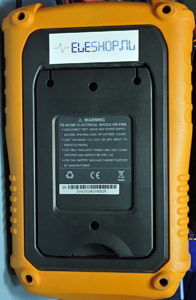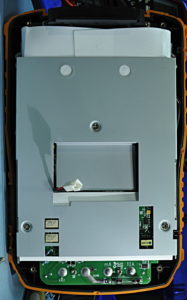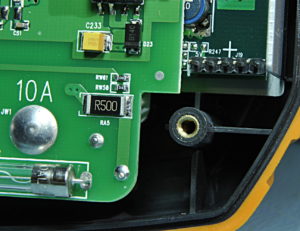This is a 60 MHz portable scopemeter with isolated inputs. I had it from the Eleshop here for 2 weeks so I could play with it. I used it a week for my work (repairing test and calibration gear) and I liked it so I decided to make a review.
———————————————————-
Update dec 2017: right after the review I had to do a repair on an calibration oilbath and that was to big for the bench. Eleshop allowed me to use the Siglent a bit longer for this. Then I found the intermittent problem by using the scope-recording/logging function of the Siglent. Something I would not have found without this scope so I decided to buy the scope. I have no other gear that can do that and it is a usable function because it uses the scope screen, so no pc needed. Besides that, although I use an isolation transformer and have diff probes an isolated scope is still very handy. And it is portable so I can set it close by and that is safe because I then can see the screen and the DUT at the same time (less risk to make a short). Now after working with it for 6 months I am still happy with it. The user interface is OK now I’m used to it. The strange menu button turns out to be very handy. It toggles the last used menu on/off. I use that a lot. For the rest I found no other problems or bugs. I almost never use the DMM part because I use it only in my lab and I have plenty very good DMM’s there.
———————————————————–
It is a 60 MHz 2 channel DSO. It is 1 GS/s and has 2 Mpts memory. Besides a scope it is a multi-meter and a logging device. It comes with 2 isolated probes, DMM probes, 2 kroks for on the probes, software for the PC, PSU, USB cable and a nice pouch to store everything.
The test leads are made from silicon cable. The tips are very sharp but the metal is a bit soft. They feel good. The resistance is very low, 0,02 ohm per lead, so the 10A would not be a problem. Isolation looks OK, no leakage at 1000V using a Megger.
The scope comes with two Multi-Contact Isoprobe II 10:1 HS probes. They are 250 MHz, 16pF, 10M, 1,2ns and 1000V, CAT 2 (600V, CAT 3)
But be careful, like all probes and scopes the max voltage is for DC and the higher the frequency, the lower the max allowed voltage becomes. There is a graph included with the probes. Together with some accessories. They are complete isolated, even the compensation trimmer is isolated. I must say, I really liked them. The feel solid and well made. A nice detail is the sliding sleeve over the ground ring.
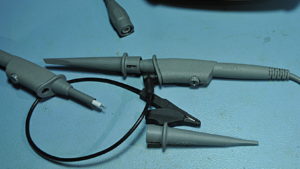
The probes
The Multimeter part
This is a portable scope with a multimeter as a bonus. There are scopemeters like the Fluke 123 that are DMM’s with a scope function and portable scopes like this Siglent (and the Fluke 192) with a DMM function.
The multimeter is build around FS9922-DMM4 , a complete 6000 count DMM in 1 chip. The Vref is spec’ d for 1.1 to 1.4V, 2mV/V change in Vdd and 100ppm/C
In VDC It has a 3 Hz update rate. Not very fast but also not bad. I have tested some voltages and it was well within specs. Under 10V it was most times better as +/- 1 count.
De AC function is not TRMS and has a very low bandwidth. Not very usable.
And talking about not usable functions the continuity function is the winner. The response time can be better stated in days 😉 It is by far the slowest I have ever seen.
Diode test is OK, it outputs 2,7V . Capacitance is like all capacitance functions on DMM’s. Handy if you have no LCR meter on hand and it works as long as you are measuring good caps. It uses DC and measures the charge and discharge time. This gives a triangle wave response. They measure the time it takes to go from 1/4th Vdd to 3/4th Vdd and back to 1/4th. ESR influences that time and gives higher readings. It is a slow way to measure (like most DMM’s) Resistance was spot on for 10 ohm and 10kohm.
And then I opened the case and saw this on the DMM piggy back pcb:
Really, are you kidding me ? A 1300 euro meter and then a miniature glass 10A/250V soldered to the PCB !!!!!! There is a 600mA/250V reset-able fuse for the mA range soldered to the under-side. The only other protection is a PTC. No bonus points here… It has a separate PSU and is coupled to the rest via optocouplers. The soldering is good.
The bananabusses are one piece and soldered to the front and back of the pcb.
The scope
The scope function works very well. I have done a lot of tests from a 500ps pulse to measuring cross talk between channels. All was well within the specs. I noticed some DC offset when it was around 20 degrees, later tests around 30 degrees showed no offset. Vrms was a bit off under 1V. It has a self calibration function.
The 2 scope channels and DMM are galvanic isolated from each other. A very nice feature that makes it a very versatile instrument. In the second part of my youtube video I show some measurements regarding scope isolation.
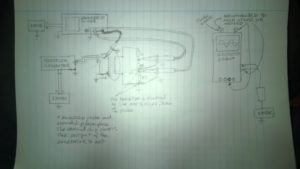
See teardown video for experiment
Triggering was impressive, a little jitter at first test but stable as a rock in later tests. Temperature ? It is very sensitive. It is well shielded and emits almost no EMI. Only around the DC input jack there was a small response using a H-field probe. Very good.
There are lots of auto measure, cursor and math functions. The menus/user interface is a bit “how you’re doing” But after I used it a while it worked fine for me. There is some improvement possible. The display has two choices for color. A white graticule or a black one. The latter is nice but the colors from the menu are chosen a bit strange and harder to read under an angle.
As said the probes are very nice.
Against my expectations (very bad experience with a Rigol scope) I really liked this scope. As said, I used it a week for my job, that is for me the best test. I work with and on high quality test and calibration gear and I’m rather critical but things that are important for me do not have to be important for you. If you work in industry you want mechanical well build stuff, you want it to survive if you drop it etc. I want speed and accuracy, I do not care about what happens is I drop it from 1 meter hight because that will never happen. I do not care about that sorry excuse for a fuse because I would never use that function. But If it was mine I would add some MOV’s and a fuse holder with a ceramic fuse just to be sure.
Logging
The third mode is graphic logging, I played a bit with that but I can not rate it because I never use logging meters so I have no clue how good or bad it is. I could use it rather easy so that’s a good start. It can do several sorts of logging. I think it can be a very usable function.
The rest:
The meter comes with software and is coupled to the PC or printer via USB. The probe compensation also uses the small USB connector. The big one is for things like a memorystick.
I tried it on an old XP laptop and a W7 laptop. The latter did not recognized the scope. I have no clue why, I am a long time Linux user so not much experience with Windows. But under XP it worked and it is a nice (free !) extra. Specs etc in this link :
Teardown pictures:
Pictures from the top of the pcb showing some fpga’s, processor, memory etc and just random picture so you se the build quality. Very nice soldering. The black block “Siglent IM1000A” is one scope channel, probably some asic like thing and galvanic isolation.
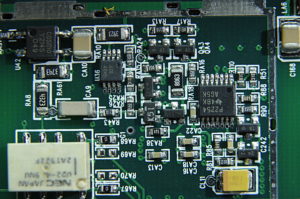
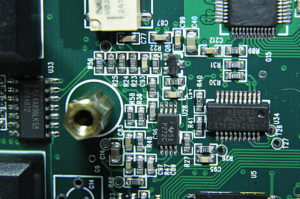
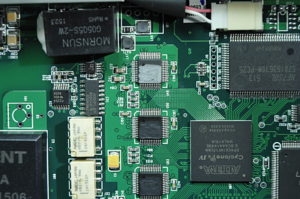
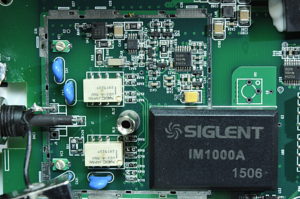
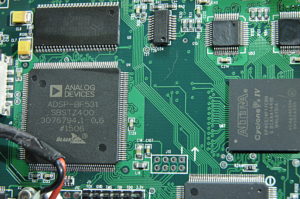
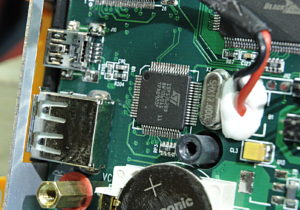
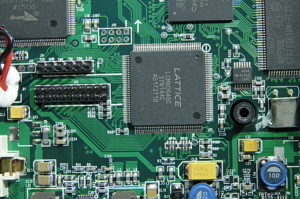
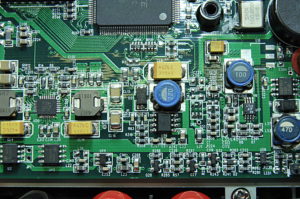
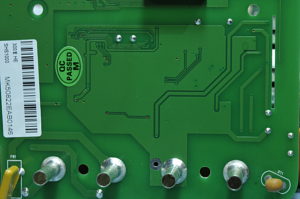
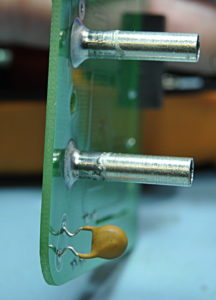
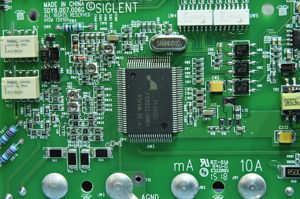
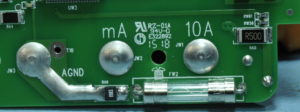
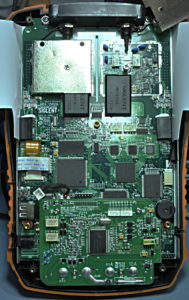
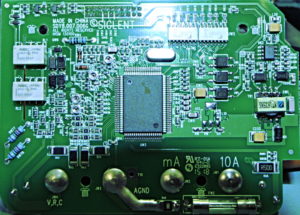
Conclusion:
I like the scope part. It triggers like a dream. We fed it with a very low frequency pulse with a very small duty-cycle. So we needed a fast timebase for the pulse but not for the frequency. One push on the autoknob made it trigger. Impressive. The 150MHz analog scope would not even trigger when we added delaylines. My 350MHz DSO needed manual trigger setting to show it.
It has plenty of trigger and measure options. It is nice build, specs are OK, it is a real and usable scope. The user interface is a bit rough around the edges.
The fact that it is isolated makes it very versatile but also almost 3 times as expensive as the non isolated version. On the other hand, 1300 incl VAT is not expensive for this kind of scope-meters.
The multimeter ? I personally do not like that part for my use and demands. It is probably usable for some people but lacks protection for industrial and automotive use, is a bit slow, continuity is useless and it is not TRMS meter.
Would I prefer it over a Fluke ? For this price and my work, I will.

